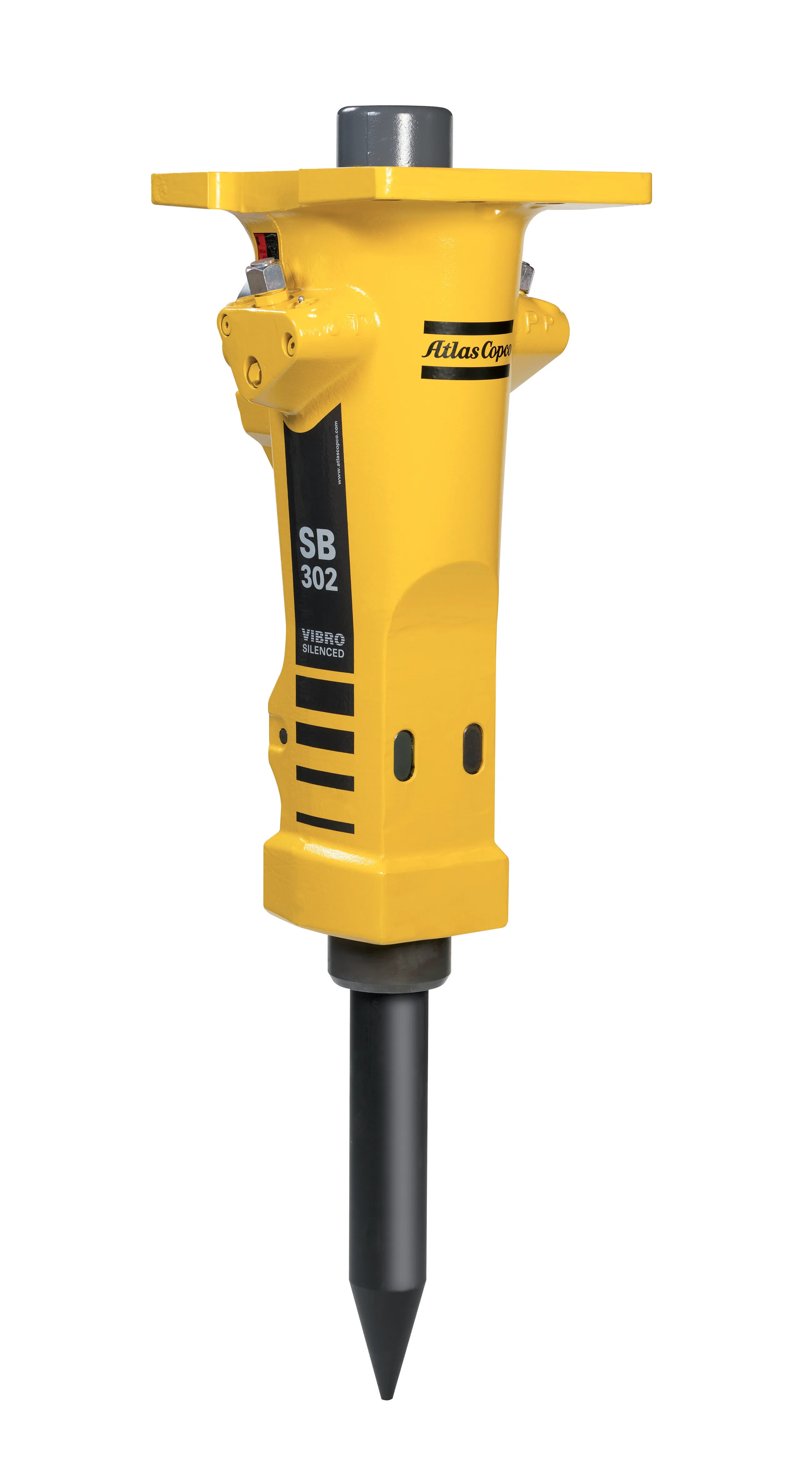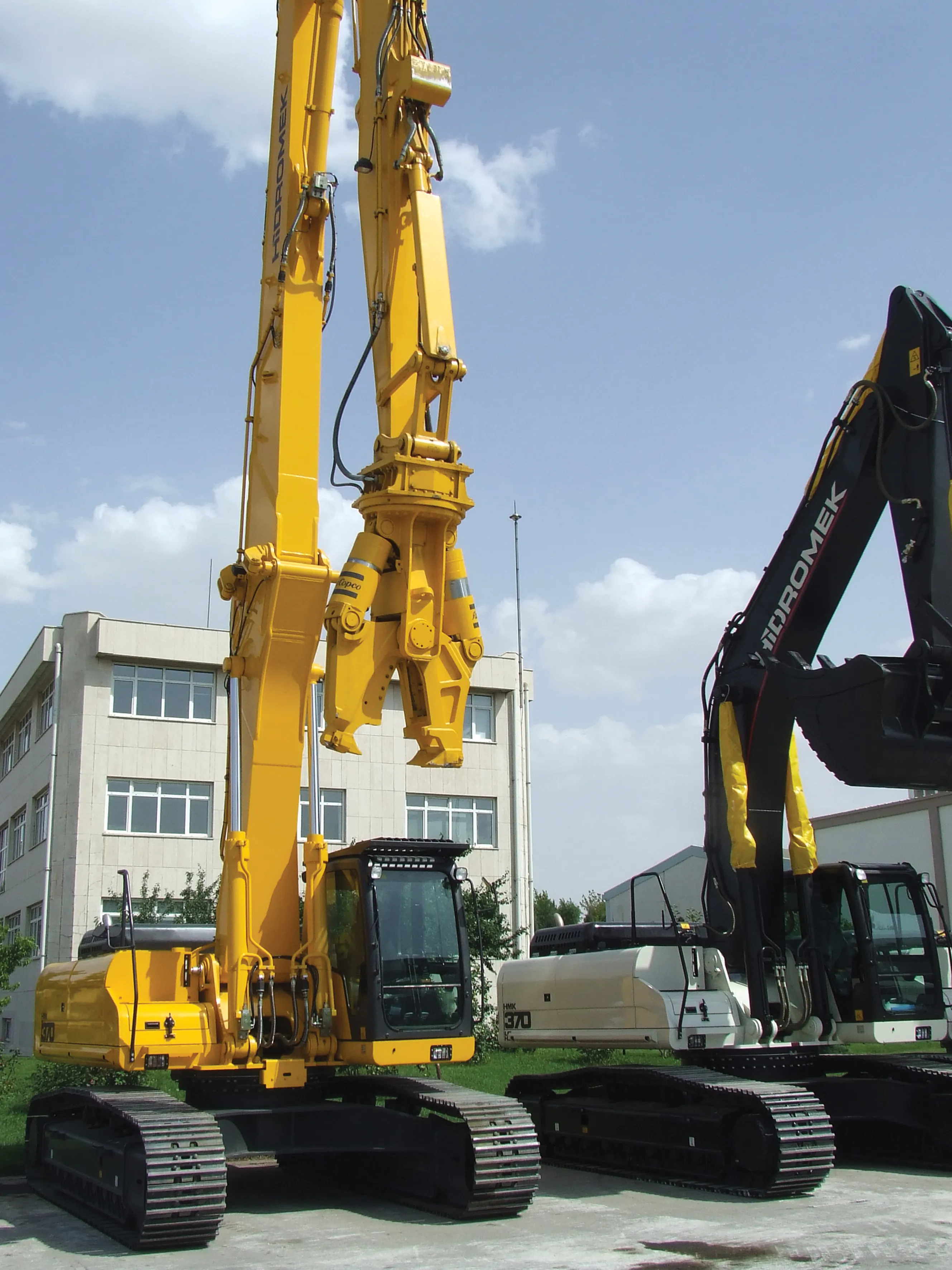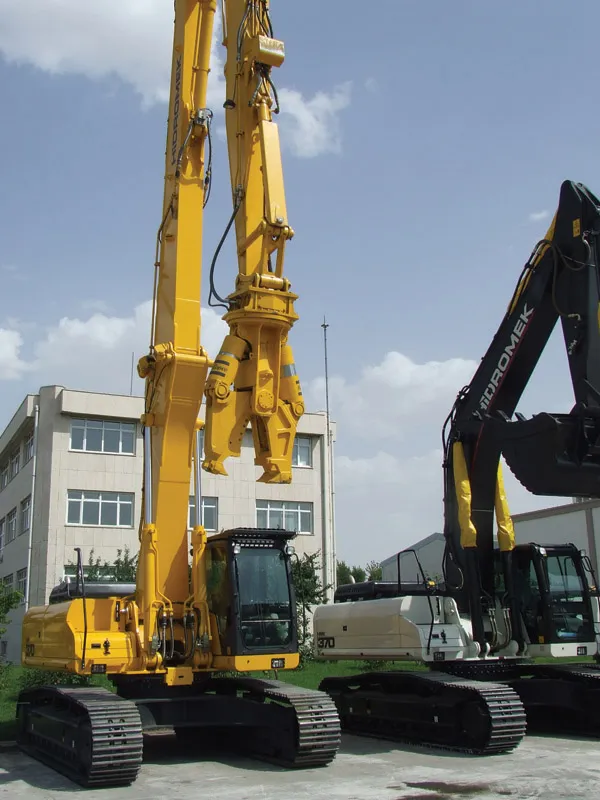Three years ago Atlas Copco launched the first of the new generation of solid body breakers based on a new manufacturing method and new body design, and last year it sold more than 10,000 small breakers in the 50 to 550kg class. Atlas Copco SB breakers are used for road work, trenching, general demolition, plus primary and secondary rock breaking, and the company is now launching the mid-range model, the SB 302, for excavators of up to 9tonnes.
March 7, 2012
Read time: 2 mins

Three years ago 161 Atlas Copco launched the first of the new generation of solid body breakers based on a new manufacturing method and new body design, and last year it sold more than 10,000 small breakers in the 50 to 550kg class.
Atlas Copco SB breakers are used for road work, trenching, general demolition, plus primary and secondary rock breaking, and the company is now launching the mid-range model, the SB 302, for excavators of up to 9tonnes.
Thord Wikström, product line manager, says: "One of the most important features in the new design of our 300kg breaker is the floating bushing which makes service and maintenance really easy. The new SB 302 brings many advantages to the operator such as higher impact rate thanks to its higher efficiency. Compared with previous models, the new body design generates lower vibrations and less noise to meet the high expectations of our customers.
"A solid body breaker is machined from a single block of metal. This method provides a number of benefits, such as no side or head bolts and a unique resistance to bending forces and operator abuse. Another advantage is fewer parts and less maintenance." The slim design of the SB 302 makes positioning easy, and its compact dimensions also facilitate working in confined applications such as indoor demolition work, along house walls and in narrow trenching, says Atlas Copco.
Conny Sjöbäck, technical development manager, concludes: "We are proud to launch the sixth model in the new solid body range which represents an advancement in our state-of-the-art technology. By further developing the solid body concept, we have created the SB 302 to help boost the productivity of our customers."
Atlas Copco SB breakers are used for road work, trenching, general demolition, plus primary and secondary rock breaking, and the company is now launching the mid-range model, the SB 302, for excavators of up to 9tonnes.
Thord Wikström, product line manager, says: "One of the most important features in the new design of our 300kg breaker is the floating bushing which makes service and maintenance really easy. The new SB 302 brings many advantages to the operator such as higher impact rate thanks to its higher efficiency. Compared with previous models, the new body design generates lower vibrations and less noise to meet the high expectations of our customers.
"A solid body breaker is machined from a single block of metal. This method provides a number of benefits, such as no side or head bolts and a unique resistance to bending forces and operator abuse. Another advantage is fewer parts and less maintenance." The slim design of the SB 302 makes positioning easy, and its compact dimensions also facilitate working in confined applications such as indoor demolition work, along house walls and in narrow trenching, says Atlas Copco.
Conny Sjöbäck, technical development manager, concludes: "We are proud to launch the sixth model in the new solid body range which represents an advancement in our state-of-the-art technology. By further developing the solid body concept, we have created the SB 302 to help boost the productivity of our customers."








